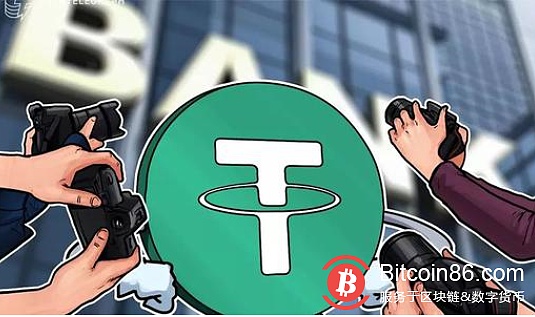Tether makes a fierce response to the "false" judicial report

“OAG submitted and obtained court documents on April 24, 2019, which incorrectly pointed out the lack of cooperation between Bitfinex and Tether,” Tether lawyer Jason Weinstein wrote in a statement. “Actually, the lawyer actively and voluntarily disclosed the existence of the expected loan transaction, after which the transaction document took effect immediately.” OAG did not know much about the details of the series of events. There are two important reasons for this.
First, because OAG asked Tether and Bitfinex to hand over a large number of documents and stop the series of work before OAG completed the investigation. This is obviously bad news for the company. There is obviously a reason for Tether to do so, and if Tether can prove it is helpful for OAG's investigation, then the company is more likely to continue to operate.
- The currency circle is a paradise for speculators
- Analysis of the madman market on May 4; human greed is one of the most difficult to overcome
- Security consultants anti-water hackers, an alternative legend for blockchain thieves
Second, Tether's lawyers seem to have worked very hard to meet OAG's requirements, but OAG is clearly not satisfied with the status quo. So it seems that OAG has a taste of "publication". Assuming that Tether's response is fully matched, it seems that OAG is very deliberate about this matter, knowing that Tether is certainly not as stubborn as OAG.
There are three points worth mentioning in 2018.
1. OAG directly ignores Tether's explanation (for some reasons, information that Tether cannot provide), Tether has said that it OAG explained: Given the company's use of decentralization, encryption platforms and applications, it may not be possible to OAG Provide all the information.
You might think this is the reason for Tether, but it is not mentioned at all in OAG's requirements.
2. Tether explains why it wants to subpoena. Tether explains that it wants OAG to review the company by subpoena instead of letter. It is for the purpose of data and privacy protection. It explains this reason to OAG, but OAG The order did not care at all, but vaguely pointed out that Tether’s request for a subpoena might be a delay in obstructing censorship.
3. The third key point is also the most important: Tether talks about what happened between December 2018 and February 2019. There are different versions of what happened. The version of OAG is as follows:
1. OAG issued a subpoena in November and Tether quickly submitted a bunch of documents.
2. OAG contacted Tether again on December 21, requesting a meeting and providing information.
3. Tether responded to OAG but postponed the meeting until February.
There is absolutely no point to note between the upcoming meetings in December and February.
5. In February, Tether revealed things with payers, including a credit line plan from Tether to Bitfinex to make up for the missing $850 million.
But here is the version provided by Tether:
1. OAG issued a subpoena in November, and Tether quickly filed a bunch of documents.
2. Tether held a conference call on December 13th, hoping that OAG would make a more specific request and said that he would get an answer before December 28. But during the conference call, OAG pushed and hoped to talk about it later, but never did it.
3. On December 14, Tether submitted more documents.
4. OAG contacted Tether again on December 21 and asked for a meeting. Tether actually offered to contact.
5. During the following week, a number of meetings were held, during which OAG changed what they wanted.
6. During the remainder of December, and the following January and February, OAG continued to ask for more information, and Tether also provided it on request.
7. In the February meeting, Tether revealed some minor issues and other facts about payment providers, including a credit line plan from Tether to Bitfinex to help make up for the missing $850 million.
March 2019, March is also a busy month
Version provided by OAG: As OAG said, the Office of the Attorney General has been asking Tether for information throughout March 2019, which led Tether's lawyers to perform like a clown and made a bunch of excuses. Tether's lawyers actually respond very little to requests for information, and even if there is a reply, they are either a mouthful of excuses or the information provided is of no value.

“On March 11, 2019, respondents submitted documents to OAG, including the words of the respondent's lawyer, Bitfinex's tweets, and blog posts by Bitfinex and Tether, all of which are public,” OAG exclaimed. . “On March 19, 2019, Tether provided materials including prior art material screenshots and image files that seemed to be unrelated to OAG's requirements, and Tether did not even respond.”
According to OAG, Tether's attorneys failed to provide the requested information and did not provide any details until the end of their first disclosure of the credit line transaction on March 21. After that, OAG found some more annoying details, and OAG decided to make the scandal public. Then they exposed the scandal to the outside world.
Tether version: As Tether said, OAG continued to make requests at the end of February and March, and Tether tried to satisfy them. During this time, Tether did the following specific content:
1. Conducted extensive discussions with OAG and provided a wealth of information required by OAG.
2. Develop a timetable for the OAG announcement in April. On March 21, Tether and OAG agreed to the public date on April 8.
On March 14, Tether explained that the credit transaction is expected to end soon and the information will be provided to OAG at the appropriate time.
4. The reply and modification of the OAG letter, which contains many false assertions, OAG did not mention the existence of this letter.
During March and April, Tether continued to provide information and demonstrations to OAG until OAG's order suddenly arrived without warning.
Next noteworthy date: May 6
The above highlights the differences between the OAG report and the Tether report, but this is only the beginning of a strong counterattack by Tether. At the same time, Bitfinex General Counsel Stuart Hoegner submitted an affidavit stating that OAG failed to prove that Tethercoin or Bitfinex users were at risk and that further documentation was required if they wanted to maintain their orders.

Another lawyer at Tether, Zoe Phillips, points out that even if Bitfinex gets a credit line from Tether, it still has 74% collateral, which means that Tether holders are not at risk. She pointed out: "Even if Bitfinex makes full use of the remaining credit line, the reserve will still be slightly less than $2 billion, or about 68% of the current Tether."
But this is just Tether's liquid cash reserve. Together with the non-cash reserve, it is still sufficient to support the existing Tether. The counterattack has already achieved results, and the New York Supreme Court began to question why OAG did not cancel the investigation of Tether. The next announcement will be held on May 6th, and the way the event will develop will become more clear at that time. That is to say, things seem to be going well for Tether and Bitfinex so far. It turns out that a multi-billion dollar company can afford some fairly good lawyers.
This may cause OAG to make the worst assumptions and investigate later. Of course, in this case, everyone thinks that Tether and Bitfinex are facing the worst situation. Interestingly, time will make some of the most embarrassing companies become more and more like roses. (哔哔News)
We will continue to update Blocking; if you have any questions or suggestions, please contact us!
Was this article helpful?
93 out of 132 found this helpful
Related articles
- Break through $6,000! 50% of Facebook enters digital currency payment system during BTC
- What are the quantitative trading tools in the digital currency market?
- Reuters: Japanese regulators will introduce new regulations on exchange cold wallet
- Nevada legislators abolish defective cryptocurrency bills
- Ethereum Alliance and Microsoft, JP Morgan Chase and other initiatives to initiate token classification
- Experts say that China’s official currency, the yuan, will become a cryptocurrency
- The bear market lost more than 272 million US dollars, and well-known encryption investors still purchase Galaxy Digital shares





